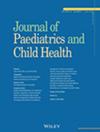Why the Delay? A Quality Improvement Initiative for Delayed Cord Clamping in Preterm Infants
Abstract
Aim
To improve delayed cord clamping (DCC) rates for preterm infants (≤ 34 + 0 weeks' gestation) and establish DCC as standard practice using quality improvement (QI) methods.
Methods
A multi-departmental initiative was undertaken. An audit of DCC for preterm infants born at or before 34 + 0 weeks was performed. Using this data and feedback from multidisciplinary staff meetings, barriers to DCC implementation were identified and targeted QI interventions were introduced. Ongoing data surveillance monitored the effects of these interventions.
Results
DCC rates were evaluated for 862 preterm infants from January 2014 to August 2022. This QI project commenced in February 2018, with a detailed audit of 225 preterm infants across three time periods: epoch 1 (immediately prior to QI initiative), epoch 2 (QI implementation phase), and epoch 3 (immediate post-implementation surveillance). Inconsistent documentation of cord clamp time and admission hypothermia were identified as potential barriers to implementation of DCC. Over the course of the initiative, the documentation rate increased from 16% to 92.6%. Hypothermia at admission decreased from 76% in epoch 1 to 43.2% in epoch 3. The baseline rate of DCC was low in epoch 1 (12%), but improved to 70% in epoch 3, with this change sustained in ongoing DCC rate evaluation to August 2022.
Conclusions
There has been a significant and sustained improvement in DCC for preterm infants at our centre. A structured approach to QI and collaboration between multiple departments were each integral in effecting this improvement in clinical care.

 求助内容:
求助内容: 应助结果提醒方式:
应助结果提醒方式:


